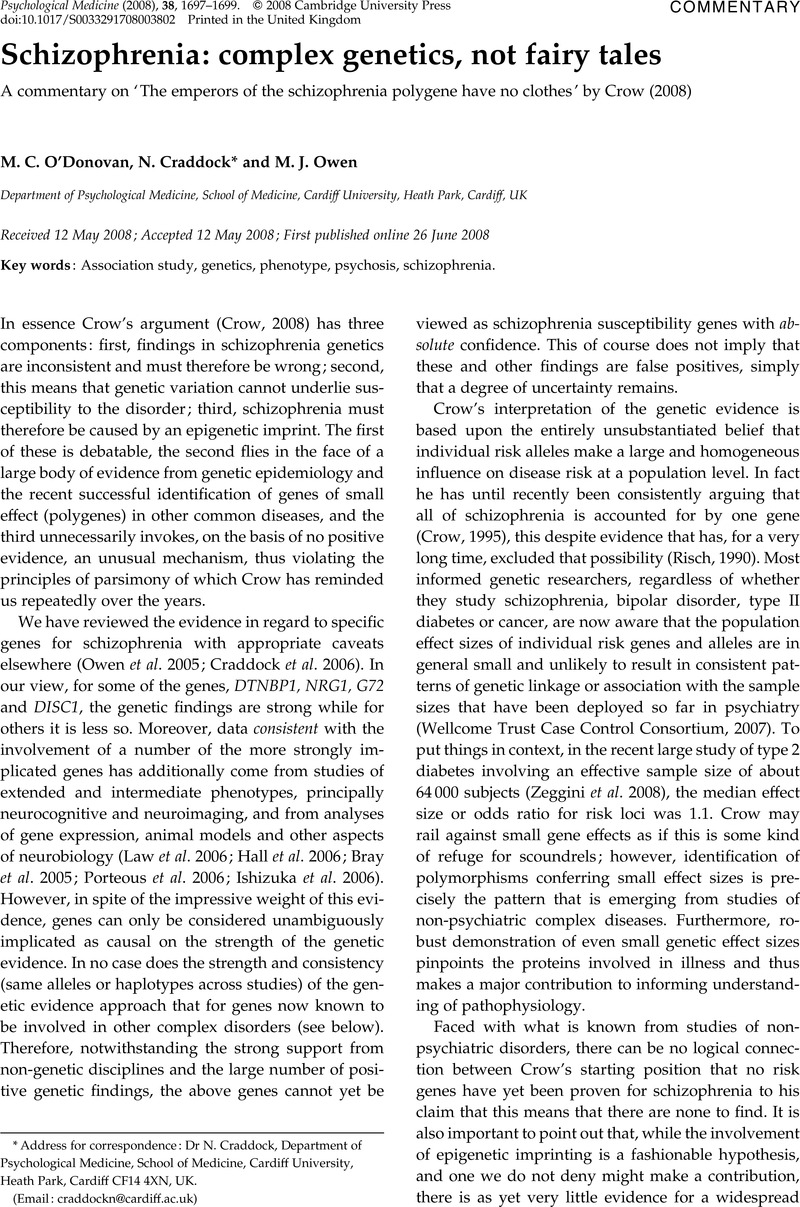Crossref Citations
This article has been cited by the following publications. This list is generated based on data provided by Crossref.
CROW, T. J.
2008.
Correspondence.
Psychological Medicine,
Vol. 38,
Issue. 12,
p.
1818.
Van Winkel, Ruud
Esquivel, Gabriel
Kenis, Gunter
Wichers, Marieke
Collip, Dina
Peerbooms, Odette
Rutten, Bart
Myin‐Germeys, Inez
and
Van Os, Jim
2010.
REVIEW: Genome‐Wide Findings in Schizophrenia and the Role of Gene–Environment Interplay.
CNS Neuroscience & Therapeutics,
Vol. 16,
Issue. 5,
Donohoe, G.
Morris, D. W.
and
Corvin, A.
2010.
The Psychosis Susceptibility Gene ZNF804A: Associations, Functions, and Phenotypes.
Schizophrenia Bulletin,
Vol. 36,
Issue. 5,
p.
904.
van Os, Jim
Rutten, Bart P.F.
and
Poulton, Richie
2010.
Advances in Schizophrenia Research 2009.
p.
19.
Donohoe, Gary
Rose, Emma
Frodl, Thomas
Morris, Derek
Spoletini, Ilaria
Adriano, Fulvia
Bernardini, Sergio
Caltagirone, Carlo
Bossù, Paola
Gill, Michael
Corvin, Aiden P.
and
Spalletta, Gianfranco
2011.
ZNF804A risk allele is associated with relatively intact gray matter volume in patients with schizophrenia.
NeuroImage,
Vol. 54,
Issue. 3,
p.
2132.
Rose, E. J.
and
Donohoe, G.
2013.
Brain vs Behavior: An Effect Size Comparison of Neuroimaging and Cognitive Studies of Genetic Risk for Schizophrenia.
Schizophrenia Bulletin,
Vol. 39,
Issue. 3,
p.
518.
Paulus, Frieder M.
Krach, Sören
Bedenbender, Johannes
Pyka, Martin
Sommer, Jens
Krug, Axel
Knake, Susanne
Nöthen, Markus M.
Witt, Stephanie H.
Rietschel, Marcella
Kircher, Tilo
and
Jansen, Andreas
2013.
Partial support for ZNF804A genotype‐dependent alterations in prefrontal connectivity.
Human Brain Mapping,
Vol. 34,
Issue. 2,
p.
304.





